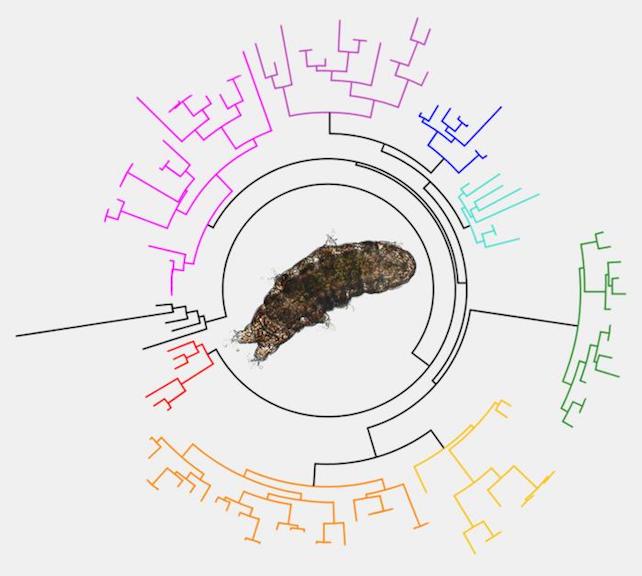Tardigrades are well-known for their incredible resilience and ability to survive extreme conditions like being boiled, frozen, irradiated, or even shot out of a gun, setting them apart from most other animals. Researchers have pinpointed a number of individual genes that may play a role in the tardigrades’ survival abilities. However, the broader questions of how and why these remarkable adaptations evolved remain open. A recent study has shed new light on this complex history, suggesting that ancient tardigrades made the leap from marine to terrestrial environments on two occasions, followed by numerous independent adaptations to cope with dryness on land.
Today, tardigrades can be found in various environments around the world, thriving in both sea and land habitats, ranging from deep ocean mud and Antarctic rocks to mountains, rainforests, and gardens. Also referred to as ‘water bears’ and ‘moss piglets,’ tardigrades have gained fame as some of the most resilient animals known to science, displaying the ability to survive even in the vacuum of space.
Anhydrobiosis, a dormant state in which tardigrades can temporarily halt their metabolism, is key to many of their survival feats, enabling them to endure almost total dehydration. Earlier research has identified several gene families unique to tardigrades that are associated with extreme metabolic shutdown in response to a lack of water, along with stress-resistance genes that are also found in other animals. Despite this, there is limited data available from most tardigrade lineages, leaving significant gaps in our understanding of tardigrade evolution and ecology.
To address this, the researchers identified sequences from six gene families across 13 genera of tardigrades, covering both major classes – eutardigrades and heterotardigrades – and constructed the first evolutionary trees for these tardigrade groups. With anhydrobiosis presumably being more advantageous to terrestrial tardigrades compared to their ocean-dwelling counterparts, the researchers anticipated a correlation between gene duplications in these families and changes in habitat among tardigrades.
However, the researchers were surprised to find numerous independent duplications in these gene families, indicating that the evolution of genes related to anhydrobiosis was much more complex than previously thought. Based on the distribution of gene families across the two major tardigrade classes, the researchers propose that there were two separate transitions from marine to terrestrial habitats in the history of tardigrades, once in the ancestor of eutardigrades and once among heterotardigrades.
While this study provides insight into the history of anhydrobiosis in tardigrades, there are still many unanswered questions, owing in part to the lack of data from certain key tardigrade lineages. The researchers acknowledge that substantial progress still needs to be made in understanding the adaptations of terrestrial tardigrades, particularly with regard to collecting more freshwater and marine tardigrade samples. The study was published in Genome Biology and Evolution.
Tardigrade Genes Reveal a Bizarre History of Their Incredible Survival Skills














